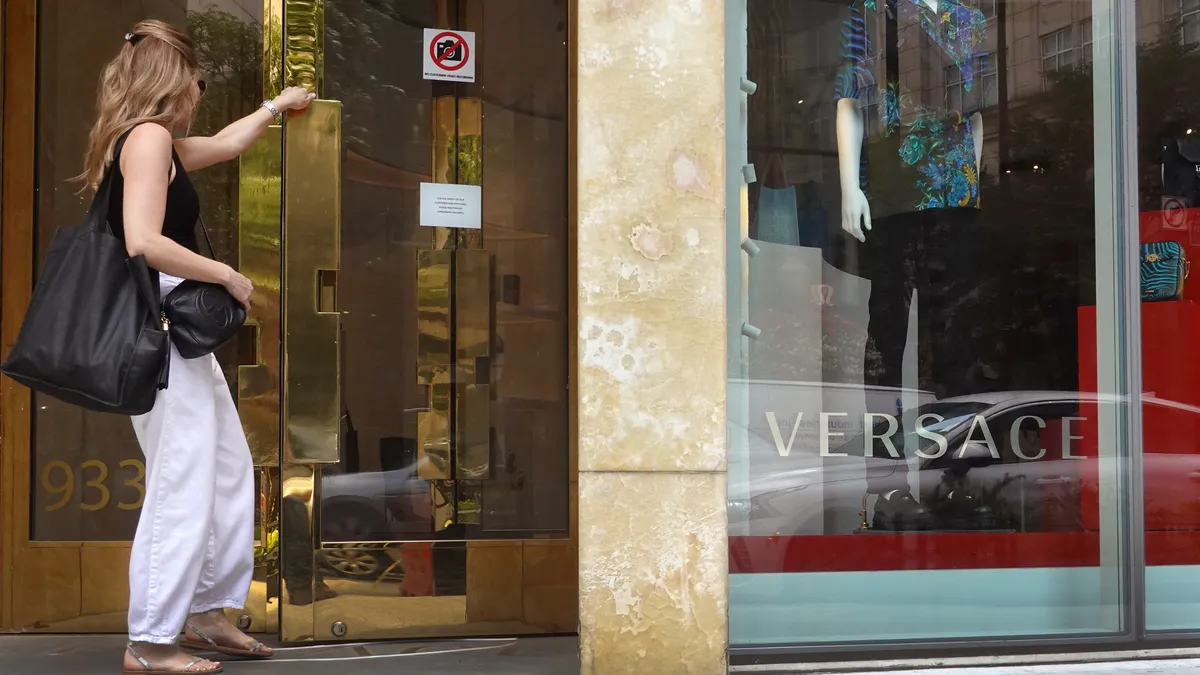Department stores were the 20th century's marvelous shopping destination. Retailers that were filled with varied and often unique merchandise, offering high levels of convenience and attentive customer service.
That heyday is over. The model, which went from dominating city downtowns to dominating malls, is beset by outside forces and in some cases by the retailers' own missteps. It's not clear yet whether it can be successfully updated for the 21st century — players like Nordstrom, Macy's and Saks are trying.
Here are six key metrics that serve as clues into department stores' woes:
In the mall era, retailers were giddy about opening locations, sprinkling their stores throughout the country in malls of all sizes. Those shopping centers were anchored by department stores — based on the notion that those retailers were major attractions that would naturally share their foot traffic with specialty stores.
That worked for a while, but ultimately led to overbuilding and over-acquisition, and the poster child for that has been Macy's. In 2005, when the May Company merged with Macy's owner Federated (later renamed Macy's), the company boasted of having 950 department stores. The idea, backed by then-Macy's CEO Terry Lundgren, was to achieve scale, efficiencies and synergies, experts say. Instead, it ushered in sameness.
In the past few years, Macy's has assiduously worked to undo that expansion, closing up 100 stores in a brick-and-mortar contraction that, despite executives' insistence to the contrary, some analysts say is far from over.

Off-price retailers like Ross and the banners run by TJX evolved from a department store concept that allowed thrifty customers to buy factory seconds, closeouts, returns and last season's leftovers at deep discounts. In fact, most department stores run their own off-price businesses, like Nordstrom Rack, Saks Off Fifth and Macy's Backstage.
The concept is now a thriving retail segment in its own right, and many off-pricers, in addition to those castoffs from department stores, now sell lower-priced clothing made exclusively for them. The inventory turns over regularly, making for a treasure hunt atmosphere that attracts shoppers of all income levels, in economies good and bad.
Thanks in part to solid fundamentals like a robust merchandise pipeline, a healthy consumer base and plenty of runway for brick-and-mortar expansion, the segment is on pace to reach $18 billion to $19 billion of incremental sales by 2021, according to a 2017 note on the sector from JPMorgan analysts. Around the same time, Moody's Investors Service released a report saying much the same thing, crediting the retailers' significant scale, flexible purchasing, strong and expanding vendor relations and adaptable real estate strategies, for their endurance.
The rise of off-price retail tracks closely with the decline of department store sales. "Off-price retailers continue to outperform other sectors of the U.S. retail industry largely because they offer the kind of lower-cost, higher-value products and shopping experience many consumers are looking for," Moody's analyst Christina Boni said in an email in 2017. "Off-price stores are far outstripping department stores, which in contrast are still struggling with outmoded formats and supply chains that can't keep pace with customer demand."
Department store sales fell 23.5% between 2013 and 2018, from $99.6 billion to $76.2 billion, according to Euromonitor International data cited in a Coresight Research report emailed to Retail Dive. Additionally, sales in the sector are projected to decline to $56.6 billion in 2023, the report found.

It's not just off-pricers. Mass merchants like Walmart, Target and Costco are also increasingly attracting consumers who, in a different era, may have headed to a department store.
"[Macy's] model is unsustainable and they lose market share every day that goes by," Nick Egelanian, president of retail development firm SiteWorks, said in an interview. "At $25 billion, and falling, Macy's is about a sixth the size of Costco, and Costco does more volume in its private label Kirkland business — which is something like $30 billion — than the entire Macy's chain. Costco's is a giant business with huge loyalty — part of the fabric of the way America shops. Coscto, TJX and Walmart are the three greatest retailers in America."
In recent decades, department stores have essentially morphed into apparel stores, as they shuttered or shrunk departments like electronics or home goods (among others) and filled those spaces with apparel.
Yet shoppers have pulled back on their discretionary spending on apparel as casual wear has become more acceptable in the workplace, and at events like religious services and life milestones like weddings. Plus, when they do spend on apparel, they tend to favor low prices, and frequent discounters like mass merchants or off-price stores.
In 1987, the average consumer allocated 5.9% of their spending to apparel and services, but by 2017, that had plummeted to 3.1%, according to a Deloitte spotlight report last year. UBS analysts, in a couple of notes this year on Nordstrom, including one deeming it a "no-growth retailer," cited changing attitudes around fashion and shoppers' inclination for lower prices as reasons for the lower expectations. But the trends are also hurting lower-cost department stores like J.C. Penney, where falling women's apparel sales have been a sore spot.

It's impossible to separate the fate of department stores, a retail model that mostly caters to the middle class, from the financial predicament of American households. Between 2007 and 2017 in the U.S., income growth for those with mean annual earnings of more than $100,000 rose a staggering 1,305% more than those with less than $50,000, according to a May report from Deloitte. And younger consumers are getting pummeled: The average net worth of those under age 35 has fallen by 34% since 1996; meanwhile, student debt for those under 30 rose 160% between 2004 and 2017.
The stark reality is that there's less and less of an American middle class to speak of. The Gini Index, a measure of income inequality, ranges from 0, ("perfect equality"), where everyone gets equal share, to 1 ("perfect inequality"), where one person or group gets it all, according to the U.S. Census Bureau.
In 1957, during one of the boom times for the department store, the Gini index was 0.351. Last year, it was 0.452, a significant increase. And when it comes to both earnings and wealth, the top 10% have gained, while the middle class and lower have lost ground.

Caroline Jansen contributed to this report.




















